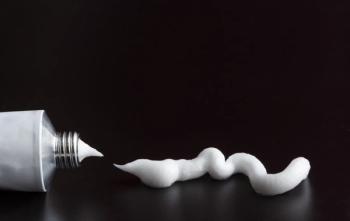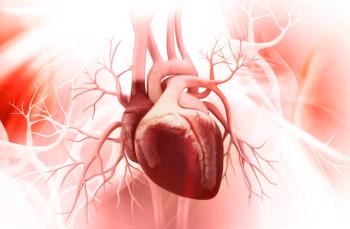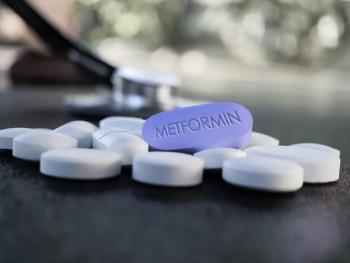Takeaways
- Postmenopausal women had higher rates of dry eye disease than premenopausal women (57.38% vs 53.22%), based on OSDI questionnaire results.
- Independent risk factors for dry eye disease included autoimmune disease, smoking, and contact lens use, with higher OSDI scores among those using artificial tears.
- Routine screening for ocular symptoms during menopause may allow earlier detection and treatment, improving comfort and preserving ocular surface health.
Many symptoms, such as hot flashes and vaginal dryness, are commonly associated with the menopause transition. However, a new study presented at The Menopause Society’s 2025 Annual Meeting in Orlando highlights another symptom that may worsen in midlife—dry eyes.1,2
Researchers from Argentina found that postmenopausal women had a higher prevalence of dry eye disease (DED) than premenopausal women, suggesting that hormonal changes during menopause may contribute to ocular surface discomfort.
Study design and population
The study, titled “Dry Eye Disease: An Unrecognized Problem in Clinical Practice,” used a cross-sectional analytical observational design. Investigators surveyed 3547 women with a median age of 52 years (interquartile range, 47–58 years) to evaluate the prevalence and severity of DED, as well as possible associations with menopause and other risk factors.
Participants completed the Ocular Surface Disease Index (OSDI) questionnaire, which classifies individuals into four severity categories based on self-reported symptoms: normal (0–12), mild (13–22), moderate (23–32), and severe (33–100). Researchers also collected information about menopausal status, autoimmune disease history, tobacco use, and contact lens wear.
Prevalence and severity
Among respondents, 63.24% were postmenopausal. The median OSDI score was 14.58 (interquartile range, 4.16–27.08). The distribution of OSDI scores revealed that 44.15% of women had normal findings, 21.74% had mild symptoms, 14.46% had moderate symptoms, and 19.65% had severe symptoms.
When stratified by menopausal status, the prevalence of dry eye disease was higher among menopausal women than among premenopausal women—57.38% compared with 53.22%, respectively (p = .016).
Associated risk factors
Logistic regression modeling identified several independent predictors of dry eye disease. A history of autoimmune disease was associated with an increased likelihood of DED (odds ratio [OR], 1.75; 95% CI, 1.41–2.17), as were smoking status (OR, 1.39; 95% CI, 1.13–1.72) and contact lens use (OR, 1.35; 95% CI, 0.94–1.96). Use of artificial tears was also associated with higher OSDI scores (OR, 3.21; 95% CI, 2.71–3.80).
These results underscore the multifactorial nature of dry eye disease and suggest that menopausal status should be considered a potential contributing factor.
Clinical implications
Dry eye disease is characterized by a lack of adequate tear production or excessive tear evaporation, leading to ocular dryness, irritation, and potential damage to the eye surface. Common symptoms include a dry, gritty, or burning sensation, along with redness and inflammation. Known risk factors include age, allergies, and autoimmune conditions, and some medications—particularly those used to manage hypertension and depression—can exacerbate the condition.
Because sex steroids have been shown to influence tear production, the hormonal changes associated with menopause may partially explain the higher rates of DED observed among postmenopausal women.
“As a result of this study, clinicians should add dry eye disease to their routine questionnaires,” said Debora Yankelevich, lead author from Hospital de Clinicas Jose de San Martin in Buenos Aires, Argentina.
Expert perspective
Stephanie Faubion, MD, MBA, medical director for The Menopause Society, emphasized the importance of understanding the intersection between menopause and eye health. “It's important to tease out the influence of aging and hormones on health. We are learning more about changes in eye health in midlife women. Early detection of dry eye disease allows for timely intervention with tailored treatments to preserve comfort, vision quality, and ocular surface health,” she said.
Conclusion
The study adds to growing evidence that menopause can impact multiple aspects of health beyond reproductive and vasomotor symptoms. Increased awareness and screening for dry eye disease may help identify affected women earlier and allow for intervention before complications such as infection or ocular surface damage occur.
These findings highlight the need for clinicians to integrate ocular health assessment into comprehensive midlife care for women experiencing the menopause transition.
References
- The Menopause Society. Risk of Dry Eye Disease Increases During Menopause Transition. Press release. October 21, 2025. Accessed October 21, 2025.
- Yankelevich D, Tutzer MI, Cremonte AE. Dry Eye Disease: An Unrecognized Problem In Clinical Practice. Abstract. Presented at: The Menopause Society’s 2025 Annual Meeting. October 21–25, 2025. Orlando, Florida.











